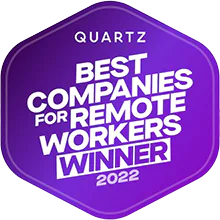Wonolo
Part-time or full-time. For fun or for income. As widely available as the gigs are, the workers who pursue them have different reasons for signing up.
A 2016 McKinsey report splits workers into four categories – free agents, casual earners, reluctants, and financially strapped – and states that one in four Americans make some amount of money from the gig economy.

Source: McKinsey
We’ve split them into three to make things simpler. Since understanding the variations can help formulate different recruitment strategies, here are the various reasons people take gigs.
The Hobbyist
“Hobbyists represent an illustrative segment of part-time drivers in the ridehail workforce. These supplemental earners are comprised of retirees, working professionals, and empty-nesters. Their primary motivation to work is often social.” –What Motivates Gig Economy Workers, HBR
The hobbyist might be a retired baby boomer who wants to meet people by being a driver. Or it could be the millennial who has fun with completing random tasks for people around town. Either way, the primary reason these workers sign up on gig platforms isn’t financial, but more social.
To appeal to them, ensuring a pleasant experience is the most important factor. They signed up to have some fun, so feeling like the work’s a bore is the worst thing. This means paying attention to quality standards, community guidelines, and proper procedures that will help both customers and workers make the most of the app.
Yes, they signed up for fun, but that doesn’t mean they’ll appreciate feeling used or taken advantage of. The flexibility inherent in the gig economy is also important; overall, McKinsey found that this group finds the most satisfaction from work, since enjoyment is not tied to payment.
The Side-Hustler
“People could also supplement this work with steady part-time work in a job that fulfils them — whether that be photography, event planning, administrative work, personal training or whatever else they choose.” –Why Working Multiple Jobs Will Be the New Normal, Entrepreneur
Somewhere between the two other categories sits the side-hustler. They don’t work full-time, and the gigs aren’t their primary source of income. However, the money definitely helps. The degree to which they need the supplementary income varies, but they’re mostly in it for the money, although fun might play into it somewhat.
This could be a person simply trying to save up for a rainy day, or someone whose full-time job earns them a low salary and therefore needs the extra cash. The higher the pay, the better, but since they’re not as dependent on the side income, the money isn’t all that matters.
Unlike the hobbyist, their primary motivating factor isn’t fun, but that doesn’t mean it doesn’t matter. Some side-hustlers might find relief doing work that’s different from their full-time employment, so once the work stops being fun, relaxing, or at least a bit interesting, they might go elsewhere. Others value the cash more, so a good hourly rate is key to attracting them. A healthy balance between fun and finance is required to retain side-hustlers.
The All-in Player
There are two types of all-in players according to McKinsey:
“reluctants, who make their primary living from independent work but would prefer traditional jobs; and the financially strapped, who do supplemental independent work out of necessity.”
These full-time workers often make up a minority of the gig economy workforce. According to a joint research by Uber and Princeton, only 12% of Uber drivers worked 35 hours or more, while 7% worked 50 hours or more. For Lyft, 22% of drivers worked more than 15 hours per week.
For all-in players, gigs are treated like full-time employment. Many are 100% committed, and others still rely on the work to make a living even as they look for employment elsewhere. Proper wages and prompt payment, good policies that protect them, and rewarding financial incentives all play a part in recruiting them.
Although hobbyists and side-hustlers can always jump ship, all-in players are more serious and often dependant on the work. Since these are the workers that will contribute most to the brand, it’s a good idea to find ways to improve working conditions for gig workers who spend the most time on the platform.


![[Report] Beyond the Gig: Exploring Reliable Work Options for the Modern Workforce](https://info.wonolo.com/wp-content/uploads/2023/10/Worker-Preferences-Report-Header-Image-500x383.png)



